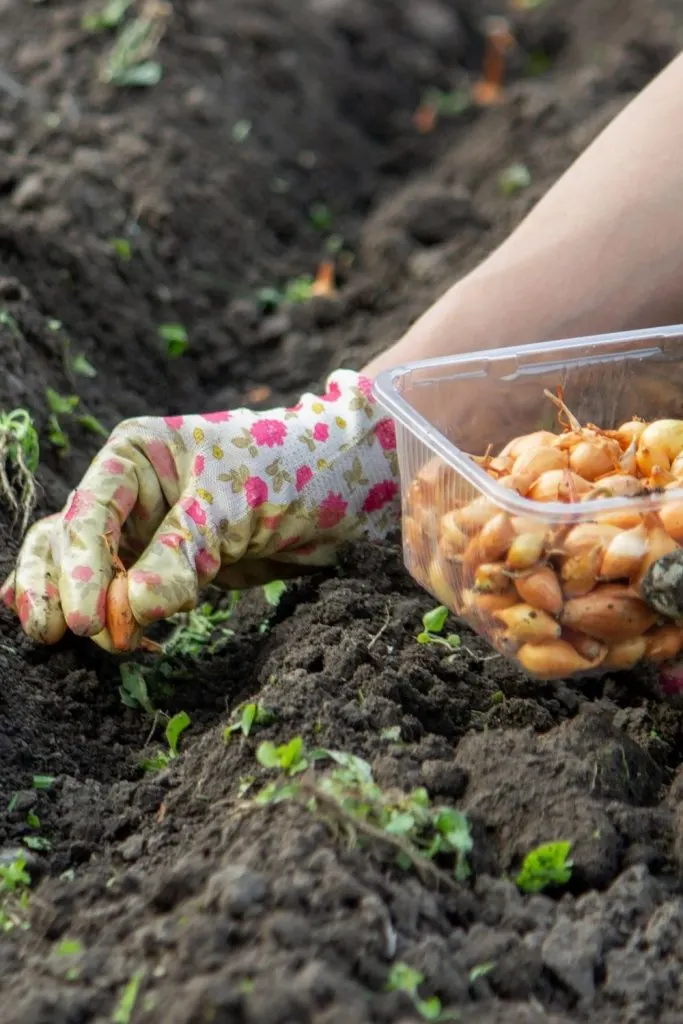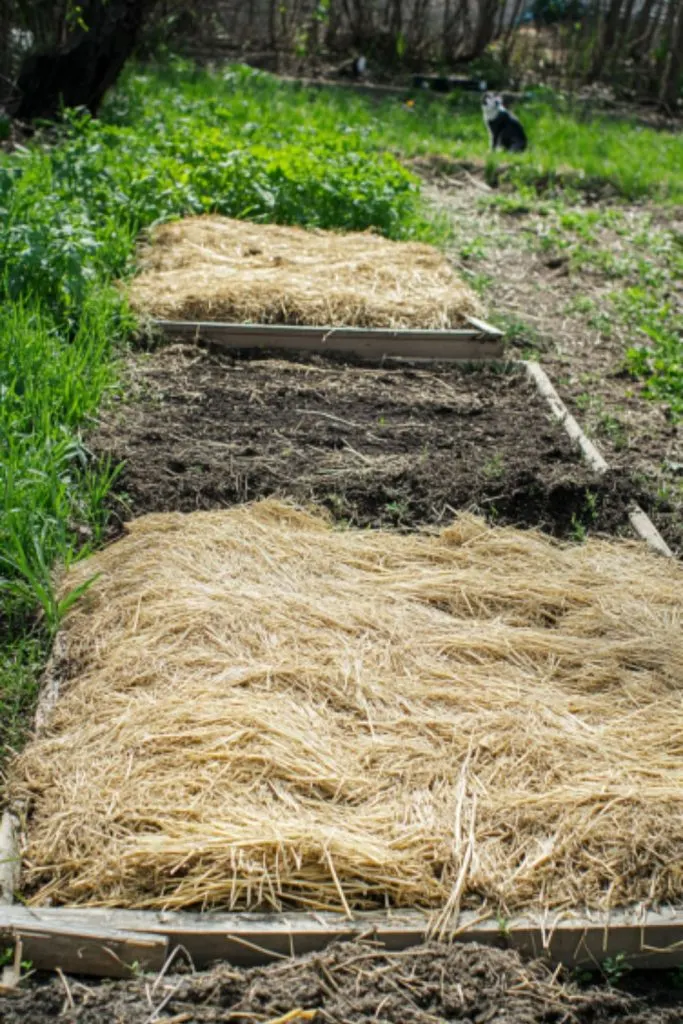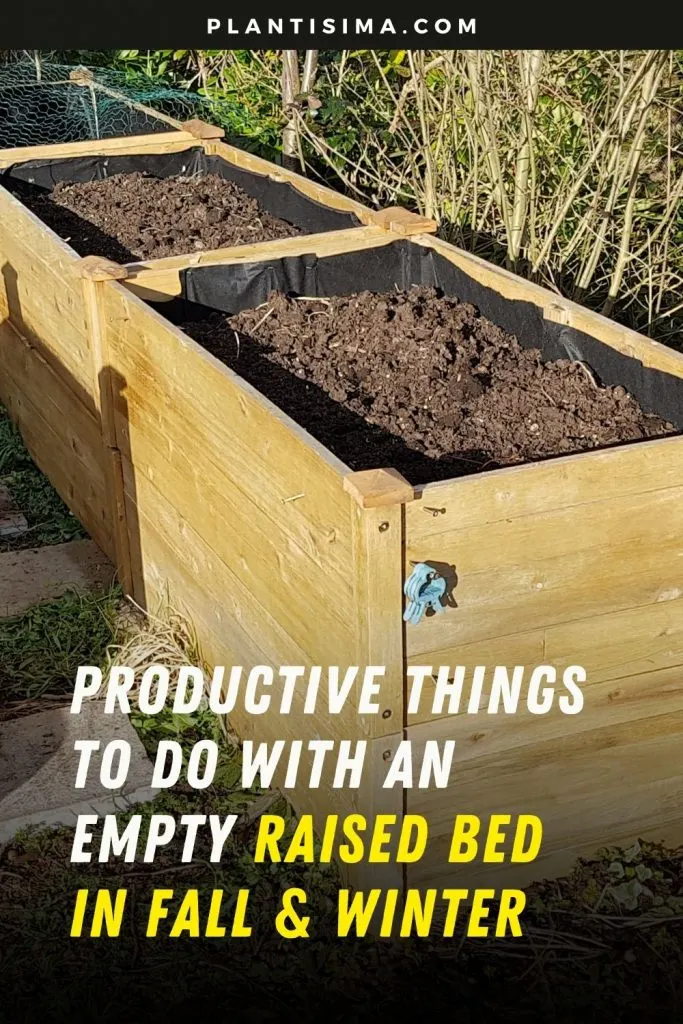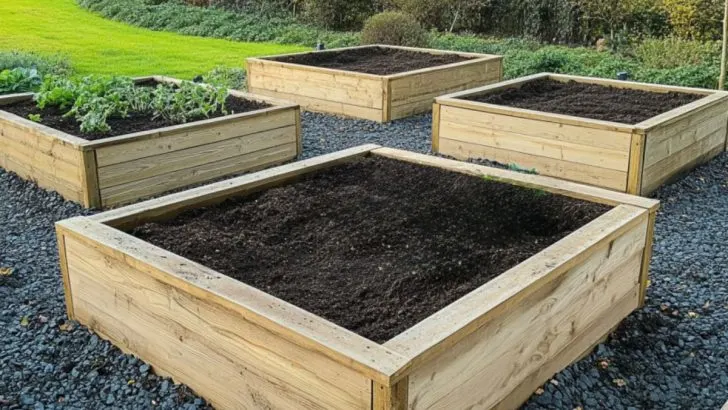As fall rolls in and the last of your vegetables are harvested, you might be thinking it’s time to let your raised beds take a long winter nap.
But before you put your gardening tools away, there are some incredibly productive things you can do with those empty raised beds during fall and winter to set yourself up for success next spring.
These simple steps will not only protect and improve your soil over the winter months but will also give your future plants a head start.
1. Plant Garlic in Your Raised Bed for a Mid-Summer Harvest
Garlic is a perfect candidate for fall planting, and raised beds offer the ideal environment for it to thrive. The well-drained soil in raised beds helps garlic develop strong roots without sitting in water, which can cause rot.

Plant garlic cloves in your empty raised beds from mid-September to November. Once they’re tucked in, they’ll establish roots before the ground freezes, ensuring larger, tastier bulbs come summer.
Garlic is one of the few crops that benefit from overwintering in the soil, and your raised bed will keep them cozy through the cold months.
2. Sow Onions for Early Spring Growth
Like garlic, onions love a head start in fall. Onion sets planted in a raised bed will establish themselves over winter, ready to take off once spring arrives.

Raised beds warm up faster than traditional garden beds, which gives your onions a growth advantage.
Simply nestle the onion sets into the soil, mulch heavily, and you’ll have a healthy crop come spring. The elevated structure of raised beds also protects onions from being waterlogged in heavy winter rains or early spring snowmelt.
3. Grow Cool-Season Crops for Winter Harvests
Don’t let those raised beds sit empty when cool-season crops like kale, spinach, and Swiss chard can thrive well into winter.
The great thing about raised beds is that they naturally drain excess water, preventing root rot in wet conditions, which is ideal for growing hardy greens.
Use row covers or cold frames to keep frost at bay, and mulch heavily around the plants to insulate them. With a bit of protection, your raised beds can keep producing fresh greens long after the first frost.
4. Plant Perennials for Early Establishment
Raised beds are an excellent place to plant edible perennials such as asparagus, rhubarb, and artichokes in the fall. Perennials establish better when planted in the cooler months, and raised beds provide the perfect environment for these plants to get their roots settled before winter fully sets in.
Because raised beds warm up quicker in the spring, your perennials will wake up earlier and start producing faster than those in traditional garden beds. Just be sure to mulch heavily after planting to protect them from freezing temperatures.
5. Enrich Your Raised Bed Soil with Compost or Manure
Fall is the perfect time to replenish the soil in your raised beds. After a long growing season, your soil will likely be depleted of key nutrients.
Adding a thick layer of compost, well-rotted manure, or leaf mold on top of your soil will feed the beneficial microorganisms that live in your raised beds and improve soil structure.
In raised beds, organic matter breaks down faster because the soil tends to be warmer and more active, even in the colder months. By spring, you’ll have rich, fertile soil that’s ready to support a new season of growth.
6. Sow Green Manures (Cover Crops) to Protect Your Soil
Don’t let your raised beds go bare over winter—plant a cover crop to protect and nourish the soil. Green manures like clover, alfalfa, or rye can be sown in fall and will grow until the first hard frost.
Cover crops are great for raised beds because they prevent erosion and compaction, which are common issues in raised beds during the off-season.
In spring, simply chop the green manure down and let it decompose in place, adding organic matter and nitrogen back into the soil for your next round of crops.
7. Apply a Protective Mulch Layer for Winter

Before you close up shop for the winter, give your raised beds a good blanket of mulch. Whether you’re leaving them empty or planting overwintering crops, a thick layer of organic mulch like straw, leaves, or wood chips will protect the soil from erosion, maintain moisture, and keep weeds from taking over.
For empty raised beds, mulching also prevents the soil from freezing solid, which can make it easier to work with come spring. Plus, as the mulch breaks down, it adds more organic material to your soil, keeping it fertile and ready for planting.
Bonus Idea: Add Worms to Your Raised Bed for Healthier Soil
Here’s a little extra tip: introducing worms to your raised beds in the fall can supercharge your soil.
Worms will aerate the soil and break down organic matter over winter, leaving you with a nutrient-rich bed that’s ready to go when planting season rolls around.
Just be sure the temperature stays above freezing when you add them!
Your Raised Beds Can Keep Working for You All Winter
Don’t let your raised beds sit idle over the colder months. With a little fall prep, you can turn them into a powerhouse of productivity, setting the stage for healthier plants and bigger harvests next season.
Whether you’re planting garlic, growing winter greens, or enriching the soil with compost, these steps will ensure your raised beds are in top shape when spring arrives.
Happy gardening!


